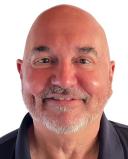Identity
A Medical Diagnosis Is Something You Have, Not Who You Are
Personal Perspective: Living with a serious medical diagnosis challenges our identity.
Posted March 25, 2024 Reviewed by Monica Vilhauer Ph.D.
Key points
- Cancer rates are increasing among young adults.
- Anyone facing a serious diagnosis must choose how they will think and talk about it.
- The first people with AIDS offered a powerful example of claiming their humanity above diagnosis.
The frankness and public vulnerability displayed by Catherine, Princess of Wales, in the recent video sharing the news of her cancer diagnosis, offered a curious and concerned world a glimpse into a very public woman’s very human effort to come to grips with a shocking and life-changing medical diagnosis.
Although it may seem surprising that such a young, fit woman—Kate is 42—should face cancer when we typically associate the disease with older age, the fact is cancer is increasing in younger adults. The American Cancer Society’s 2024 annual report on cancer facts and trends shows that younger adults are the only age group who have experienced an increase in cancer incidence—rising by 1% to 2% each year between 1995 and 2020. It also shows increasing rates of breast, prostate, and endometrial cancer in young adults. Colorectal cancer is now the leading cause of death for men under 50; it’s second for women in that age group.

Each woman and man who—like the Princess of Wales—receives a cancer or other serious medical diagnosis, faces the prospect of not only treating their illness but figuring out for themselves what it will “mean” for them to have it.
Here’s how I know. I had recently turned 47 when my doctor called to tell me I had tested HIV-positive. Suddenly, without warning because I had no symptoms, I had to learn how to think of myself as “living with HIV”—rather than simply encouraging friends who had it or writing about it as a health reporter, as I had done for the previous two decades.
What would it mean to me to have the very virus that had killed so many of my friends?
One thing I was certain of from the beginning of this new “after”: I did not want to be defined by my new HIV status. I wanted simply to keep being John—not “John, the person with HIV.” As I eventually came to put it, HIV is something I have; it’s not who I am.
Getting to that point required me to make some choices. For example, I chose to reject the shame and stigma too many people still attach to HIV because of its association with how the virus is mainly transmitted—through sex and injection drug use.
Instead, I looked for role models in the earliest people with AIDS—as they insisted on being known. These gay men had already pushed through the shame and stigma they were expected to accept as their plight for being homosexual. As openly, proud gay men, they weren’t about to accept others’ judgments about the deadly new virus that seemed to single them out in the early years of the now 43-year-old HIV pandemic. They insisted on being recognized foremost as persons.
Unlike those people back in the 1980s, when there was no effective treatment and a positive HIV test almost certainly meant getting gravely ill and dying prematurely, I had the good fortune to be diagnosed at a time when there were powerful medications available to keep the virus in check and let me go about simply living my life. I made another choice: I would focus on being grateful for those medications, the resourcefulness I needed to ensure I had access to them even during financially challenging times, and that they have let me live with HIV rather than die from it.
Choosing how to frame the story we tell ourselves in our self-talk about what a serious diagnosis means is important to how well we live with it. We choose whether we will define our illness—or let it define us. It has huge implications for our mental health and resilience.
It’s unlikely the Princess of Wales will become known as “The Princess with Cancer” because her royal title trumps her diagnosis. As it should. Cancer is something she has and must deal with; it’s not who she is.


